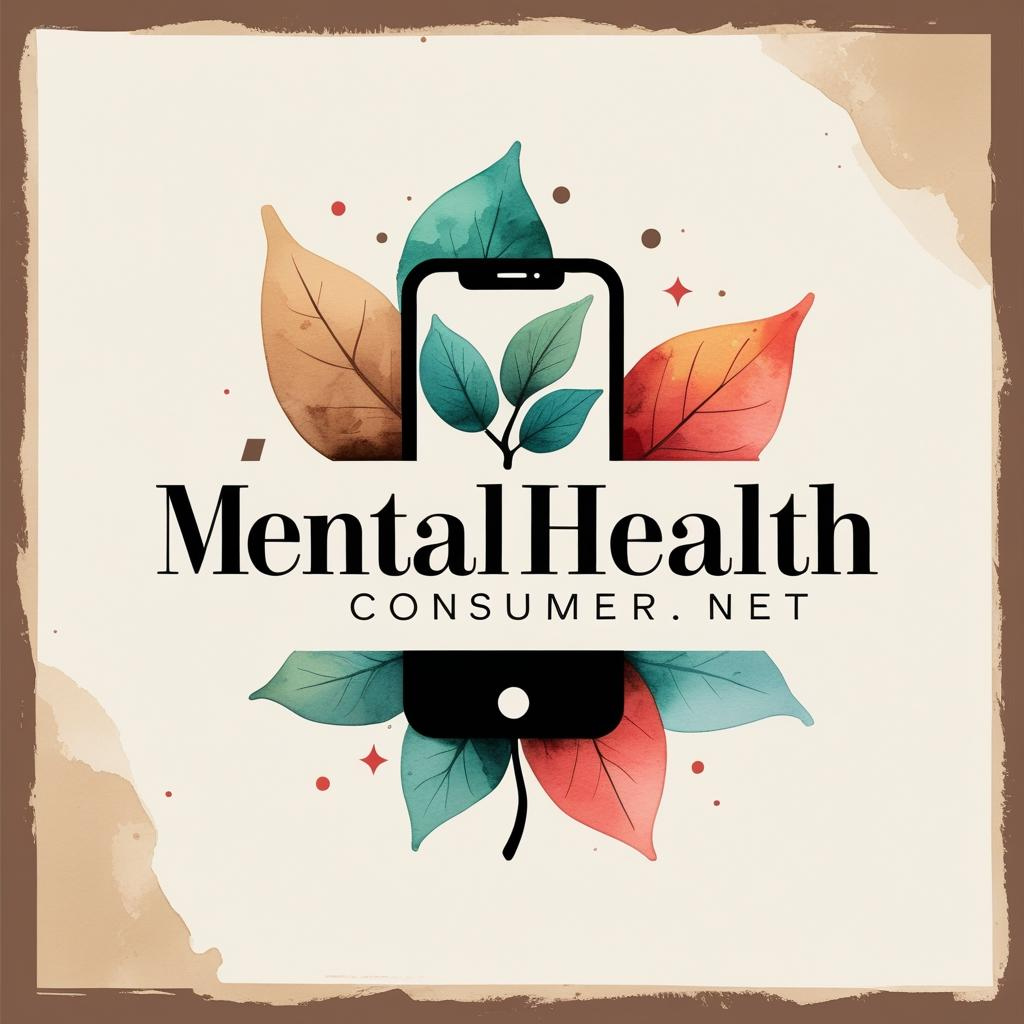I’ll never forget the night I first understood the power of the internet for mental health. It was 3 AM, I was a new parent, and I was holding a screaming baby, feeling completely and utterly alone. In a moment of desperation, I typed my very specific, very niche worry into a search bar. I landed on a forum, a simple, old-school message board. And there it was: a thread, hundreds of posts long, from other parents who had felt the exact same way. Reading their words was like a dam breaking inside me. I wasn’t broken. I wasn’t the only one. Those strangers, through a screen, made me feel seen in a way I hadn’t felt in months.
This is the incredible promise of online communities. In a world where we can feel more disconnected than ever, they offer a space to find our people, especially when we’re struggling. But let’s be honest, the internet can also be a minefield. For every supportive group, there’s a toxic one. In this guide, we’ll walk through how to find the good ones: the safe, supportive online communities that can be a true lifeline. You’ll get a step-by-step plan for vetting groups, protecting your privacy, and engaging in a way that truly improves your wellbeing.
The Double-Edged Sword: Why Online Communities Can Be a Lifeline and a Risk
At their best, online communities are powerful tools for mental health. They tackle one of the biggest drivers of poor mental health: loneliness. A report by Cigna found that three in five Americans report being lonely. For people dealing with niche health issues, belonging to a minority group, or struggling with social anxiety, finding in-person support can be incredibly difficult. Online spaces remove those geographic barriers.
The core benefit is peer support: the simple, profound act of connecting with someone who just “gets it.” This validation can reduce feelings of isolation and shame. A 2019 study published in the Journal of Medical Internet Research found that participation in online mental health communities was associated with perceived improvements in wellbeing. Members felt empowered and more hopeful. There is alot of power in shared experience.
However, the risks are just as real. Unmoderated or poorly moderated groups can become echo chambers for negativity, misinformation, or even harmful behaviors. You might encounter cyberbullying, competitive suffering, or unsafe advice. Anonymity can be a shield for some, but it can also enable cruelty. The key is learning to tell the difference between a healing space and a harmful one.
💡 Pro Tip: Look for communities that are either run by or affiliated with established non-profits (like the National Alliance on Mental Illness or Mental Health America). These groups often have trained moderators and clear community guidelines.
Finding Your Tribe: Where to Look for Supportive Online Communities
So, where do you even start looking? The internet is a vast place. Different platforms are built for different types of interaction, and the right one for you depends on what you’re looking for. Some people prefer the anonymity of forums, while others crave the real-time chat of a service like Discord.
Here’s a quick breakdown of the most common types of online communities:
| Platform Type | Pros | Cons | Best For… |
|---|---|---|---|
| Forums (e.g., Reddit) | Often topic-specific; allows for anonymity; searchable archives are a rich resource. | Moderation quality varies wildly; can be impersonal; older interface. | Seeking information on specific conditions or finding a highly niche group. |
| Facebook Groups | Easy to use; integrated into a platform you already use; “Private” groups offer some privacy. | Tied to your real identity; potential for privacy breaches; algorithm can be distracting. | Local parent groups, hobby-related support, or groups where a real-name identity is preferred. |
| Discord Servers | Real-time chat; allows for voice/video calls; can feel more immediate and personal. | Can be overwhelming and fast-paced; requires more active participation. | Younger audiences, gamers, and those seeking immediate, conversational support. |
| Dedicated Apps/Sites | Built specifically for support; often well-moderated; focused on user safety. | May have a smaller user base; some may have subscription fees. | People looking for a highly curated and safe environment for a specific issue. |
When searching on platforms like Reddit, use keywords like “support,” “anxietyhelp,” or “ADHD” to find relevant “subreddits.” For Facebook, search for “[your condition] support group.” The most important thing is not the platform itself, but the quality of the specific group you find.
💡 Pro Tip: Start your search with a specific goal in mind. Are you looking for practical tips for managing ADHD? Or are you looking for emotional support from fellow cancer survivors? Knowing your goal will help you filter out irrelevant groups quickly.
Your Step-by-Step Plan for Safely Joining an Online Community
Jumping into a new online group can feel intimidating. How do you know if it’s a safe space before you share something vulnerable? Here’s a simple framework to help you vet and join a community mindfully. We’ll call it the V.E.T. Method: Verify the rules, Engage slowly, and Trust your gut.
- Verify the Rules & Moderation (Before Joining): This is the most crucial step. Look for a group with clear, publicly posted rules. Do they have explicit policies against hate speech, bullying, and giving unsolicited medical advice? Look for signs of active moderation. Are rule-breaking posts removed quickly? A good group is actively managed. A free-for-all is a major red flag.
- Engage Slowly: The “Lurk and Learn” Phase (First Week): You don’t have to post on day one. Spend some time just reading. This is called “lurking,” and it’s a perfectly healthy way to get the feel of a community. How do people respond to newcomers? Is the tone generally supportive or critical? Do people respect differences of opinion? This gives you a real sense of the group’s culture.
- Trust Your Gut (Always): This is your most important tool. How does being in the group make you feel? If you log off feeling more anxious, drained, or judged than when you logged on, that is a powerful signal. A supportive community should leave you feeling understood, validated, or at least neutral. If a group feels “off” to you, it probably is. Don’t be afraid to leave without explanation.
Protecting Your Digital Self: Privacy Best Practices
- Use an Anonymous Username: Unless the group requires real names, create a username that is not tied to your real identity. Don’t use your name, birth year, or location.
- Review Your Privacy Settings: On platforms like Facebook, double-check your personal profile’s privacy settings. Be mindful of what information is public.
- Be Vague About Identifying Details: You can share your experience without sharing your exact location, workplace, or other identifying information. Speak in general terms.
💡 Pro Tip: Create a separate email address just for your online community accounts. This creates another layer of separation between your online support life and your personal/professional life.
How to Be a Healthy Participant: Giving and Getting Support
Once you’ve found a community that feels safe, the next step is learning how to participate in a way that is healthy for you and for others. It’s a two-way street; getting support often involves giving it, too.
A core principle here is understanding the difference between empathy and advice. Most people are not looking for a stranger to solve their problems. They’re looking for someone to say, “I hear you, and that sounds incredibly hard.” The American Psychological Association notes the importance of the therapeutic relationship, and while peer support isn’t therapy, the principle of a supportive, non-judgmental connection is the same.
Best Practices for Healthy Engagement
- Use “I” Statements: Share from your own experience. Instead of saying “You should do X,” try “When I was in a similar situation, what helped me was Y.” This offers support without being prescriptive.
- Set Boundaries with Your Time: Online communities are available 24/7, which can be a blessing and a curse. It’s easy to get sucked into endless scrolling, especially when you’re feeling down. Decide how much time you want to spend there each day. Learning how to set healthy boundaries with your phone is essential.
- Know When to Step Back: If a discussion becomes too triggering or overwhelming, it is 100% okay to mute the conversation or log off. You don’t have to engage with every post. Protect your own mental energy first. If a group makes you feel drained anxious or judged it’s time to leave.
- Manage Your Notifications: Constant pings can create a sense of urgency and anxiety. Turn off push notifications for the app or website. You can use your phone’s built-in tools, like Focus Mode, to batch when you check in with your group, rather than letting it interrupt your day.
Outcome Expectations Breakdown
What should you realistically expect when you join a new group? It’s not an instant fix.
- First Week: The “Lurking” Phase. Your primary goal is to listen and observe. You might feel a bit shy or overwhelmed. The main outcome is determining if the group’s vibe feels right for you.
- First Month: Making Your First Post. You might share a small piece of your story or ask a question. The response you get will be a big indicator of the group’s health. You should feel a small sense of relief and connection.
- Months 2-3: Finding Your Rhythm. You’ll start to recognize “regulars” and feel more comfortable sharing and responding to others. You should feel a consistent, if small, sense of support and less isolation.
- 6 Months and Beyond: Becoming a “Regular.” You may find yourself becoming a source of support for newcomers, sharing what you’ve learned. The group feels like a reliable part of your support system, a place you can turn to during tough times.
Effort & Resources Required
- Time commitment: 15-30 minutes per day, a few times a week is a healthy starting point. It’s more about consistency than total hours.
- Costs: Most online communities are free. Some dedicated platforms may have a subscription model.
- Skills: Digital literacy, boundary-setting, and the self-awareness to know when a space is or isn’t serving you.
- Ongoing maintenance: Periodically reassessing if the group is still meeting your needs. Communities can change over time.
Quick Takeaways
- Online communities can be a powerful tool against loneliness and provide vital peer support, but they come with risks like misinformation and toxicity.
- The best communities have clear rules and active moderation. This is the number one sign of a safe space.
- Use the V.E.T. Method to safely join a new group: Verify the rules, Engage slowly by lurking first, and Trust your gut if it feels wrong.
- Protect your identity by using an anonymous username, checking your privacy settings, and avoiding sharing specific identifying details.
- Participate healthily by sharing your own experience (“I” statements) instead of giving unsolicited advice.
- Set boundaries with your time and notifications to prevent the group from becoming another source of digital stress.
- Online peer support is a supplement to, not a replacement for, professional mental health care.
- If a community consistently makes you feel worse, leave. Your wellbeing is the top priority.
Conclusion: Connection is a Practice, Not a Place
My “learned the hard way” moment with online communities came when I joined a group that, at first, seemed incredibly supportive. But over time, the tone shifted. It became a place of “competitive suffering,” where everyone seemed to be trying to one-up each other’s trauma. I found myself leaving the site feeling drained and hopeless. It took me a while to realize I had a choice. Leaving that group felt like a breakup, but it was one of the best best things I ever did for my mental health. I learned that a community is only healthy if it helps you heal, not if it keeps you stuck.
That’s the real takeaway here. Online communities are not a magic bullet. They are tools. The right one, used mindfully, can be an incredible asset in your mental health toolkit. It can remind you that you’re not alone on those 3 AM nights. But the wrong one can do more harm than good. The goal is to become a savvy consumer of digital spaces, to learn how to find the pockets of genuine connection while sidestepping the toxicity.
Start small. Find one potential group and just read for a week. Don’t pressure yourself to post. See how it feels. The internet has given us an unprecedented ability to connect with people who share our unique human experiences. By approaching it with intention, curiosity, and a healthy dose of caution, you can find the people who get it, and get the support there looking for.
Frequently Asked Questions About Online Communities and Mental Health
Are online mental health communities really helpful?
Yes, for many people, they can be very helpful. They reduce isolation, provide validation, and offer practical advice from others with lived experience. The key is finding a well-moderated, supportive community. They are a powerful supplement to, but not a replacement for, professional therapy.
How do I find a safe online support group?
Look for groups with clear, enforced rules against bullying and giving medical advice. Check for active moderators. Groups affiliated with reputable organizations like NAMI or the Anxiety & Depression Association of America are often a safe bet. Start by reading posts to gauge the tone before you participate.
What are the signs of a toxic online community?
Red flags include a lack of moderation, frequent arguments or personal attacks, a culture of one-upmanship or “competitive suffering,” the promotion of unsafe advice, and a general feeling of negativity or judgment. If a group makes you feel more anxious or drained, it’s likely a toxic environment.
How can I protect my privacy in an online support group?
Use an anonymous username and a separate email address not tied to your real identity. Be careful not to share identifying details like your specific location, employer, or full name. Always review the platform’s privacy settings and the group’s specific rules on confidentiality.
How long does it take to feel comfortable in an online group?
It varies, but give yourself at least a few weeks. Spend the first week or two just reading and getting a feel for the community. It might take a month or more of occasional participation before you start to feel like a “regular” and build a sense of trust and connection.


